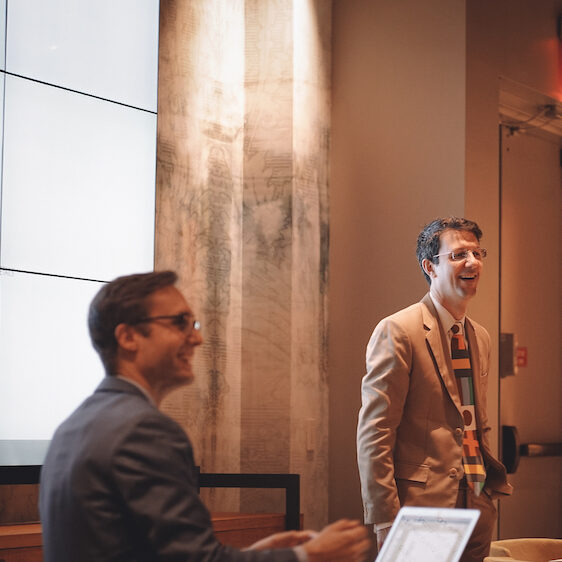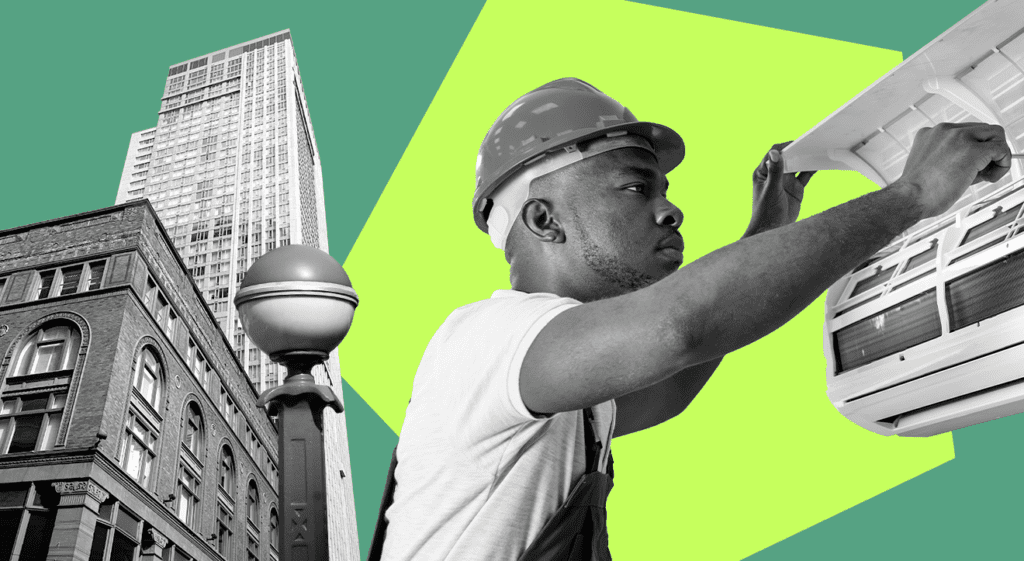
What is Local Law 97?
1
Sets carbon caps for buildings over 25,000 square feet
3
Allows multiple ways to comply, including for affordable housing
2
Starts in 2024 and drives toward net zero emissions by 2050
4
Includes large fines for exceeding carbon caps
50,000
buildings
60%
of NYC’s building area
50%
of NYC building emissions
In 2019, New York City enacted Local Law 97 to drive deep emissions cuts from buildings, which are responsible for more than two-thirds of NYC’s greenhouse gas emissions. The law places carbon caps on most buildings larger than 25,000 square feet—covering nearly 50,000 properties across NYC.
It is the most ambitious building emissions legislation enacted by any city in the world, and it incorporates many recommendations from Urban Green’s 80×50 Buildings Partnership.
Local Law 97 phases in carbon caps through 2050
Starting in 2024, many aspects of the law phase in over time. Carbon caps will become more stringent over a series of compliance periods through 2049. In 2050, all buildings will have to meet zero emissions requirements. Explore Local Law 97’s timeline below.
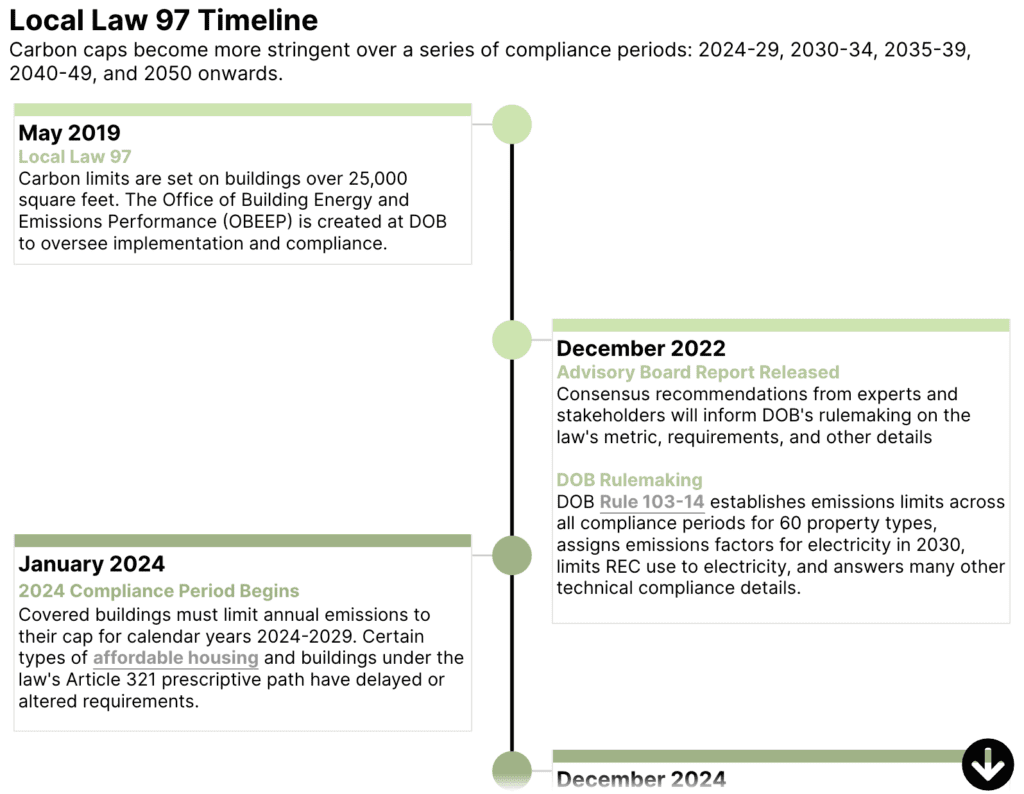
Carbon caps vary across 60 property types
Local Law 97 places emissions limits on individual buildings that are measured in carbon emissions per square foot. Each building’s carbon limit depends on its size, property type and compliance year.
Starting in 2024, the law assigns emissions limits for 60 different property types from Energy Star’s Portfolio Manager that reflect the wide variation in energy use among buildings. Those limits ratchet down over five compliance periods, so each building will be allowed to emit less carbon over time. Explore the law’s carbon caps for some of the key property types below.
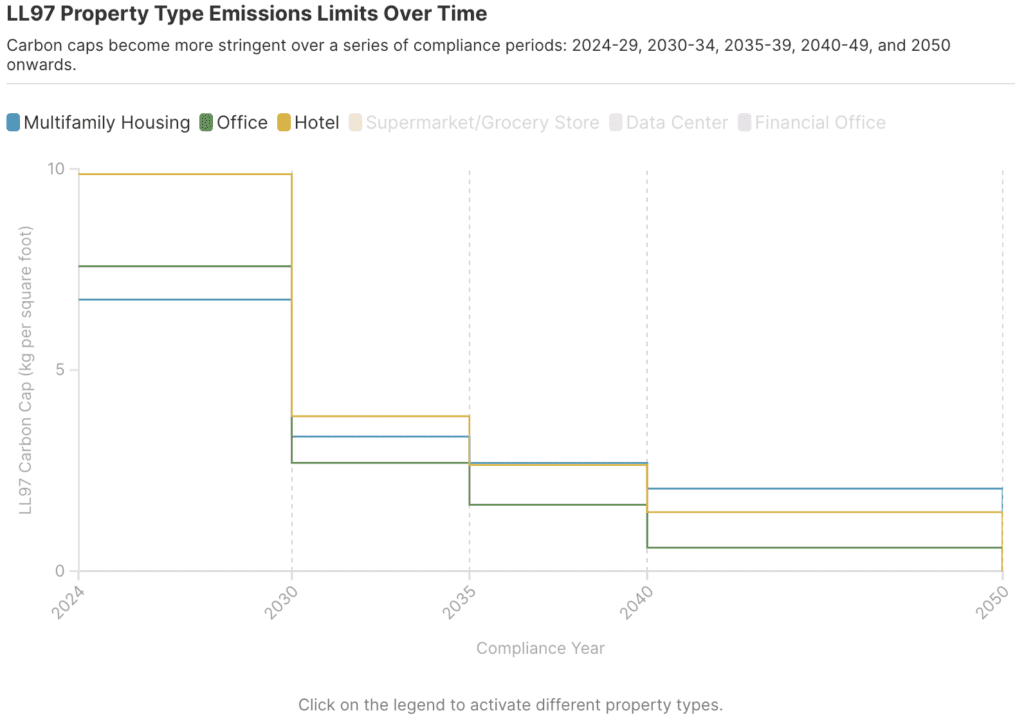
Buildings emit carbon when they use energy
A building’s carbon footprint comes from its total energy use across a variety of fuel types – like electricity, natural gas or fuel oil. The law assigns a “carbon coefficient” to specify the carbon content for each fuel type. A building’s annual emissions are determined by combining total energy use for each fuel type multiplied by its corresponding carbon coefficient.
The carbon from electricity use by buildings will go down over time as the grid gets cleaner. Local Law 97’s electricity carbon coefficient for the 2030 compliance period is about 50% cleaner than the one assigned for 2024, and aligns with New York State’s ambitious mandates for renewable energy deployment. As this happens, electrifying building systems that traditionally use fossil fuels—like heat and hot water—will be key for lowering carbon.
There are many ways for building owners to comply
Owners of buildings that must meet the law’s annual carbon limits can take a number of actions to comply, including:
- Lowering carbon directly through energy efficiency and switching to lower-carbon fuels;
- Installing heat pumps to utilize the law’s beneficial electrification credit, which rewards buildings that replace fossil fuel heating, cooling and hot water systems with highly efficient electric equipment;
- Purchasing certificates through the law’s new Affordable Housing Reinvestment Fund, which helps pay for electrification projects in designated affordable housing;
- Using credits from eligible renewable energy generation (RECs) to offset electricity emissions; and
- Installing solar or battery storage onsite to deduct from their total emissions.
Certain types of affordable and income-restricted housing have delayed or altered requirements. And some covered buildings—like houses of worship and buildings with more than 35 percent rent-regulated units—fall under the law’s definition for “Article 321 buildings.” Those buildings must perform a prescriptive checklist of low-cost energy upgrades by 2024 rather than meeting the law’s carbon caps.
Owners can check DOB’s LL97 covered buildings list to determine which compliance path they must follow. For more details, see the Article 320 Info Guide and Article 321 Filing Guide.
Many buildings will have to take action before 2030
Based on 2023 energy performance, about 8 percent of properties emit more GHG than their 2024 cap, while about 57 percent of properties emit more GHG than their 2030 cap. Those numbers vary somewhat across property types. Check out the details in the graphics below, and learn more about these properties and their progress here.
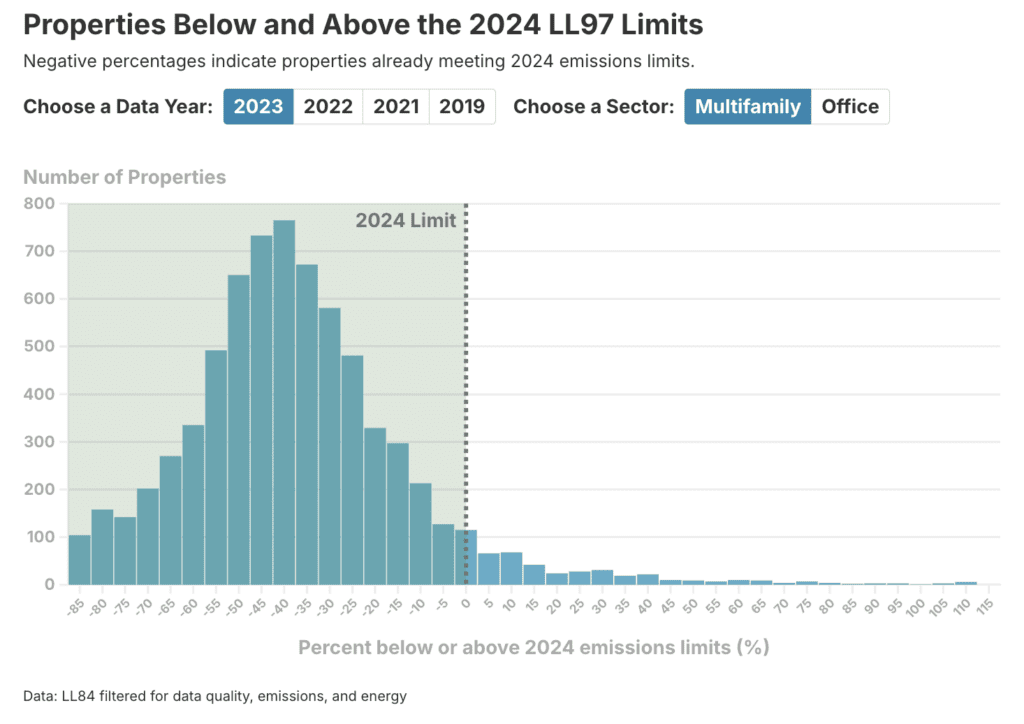
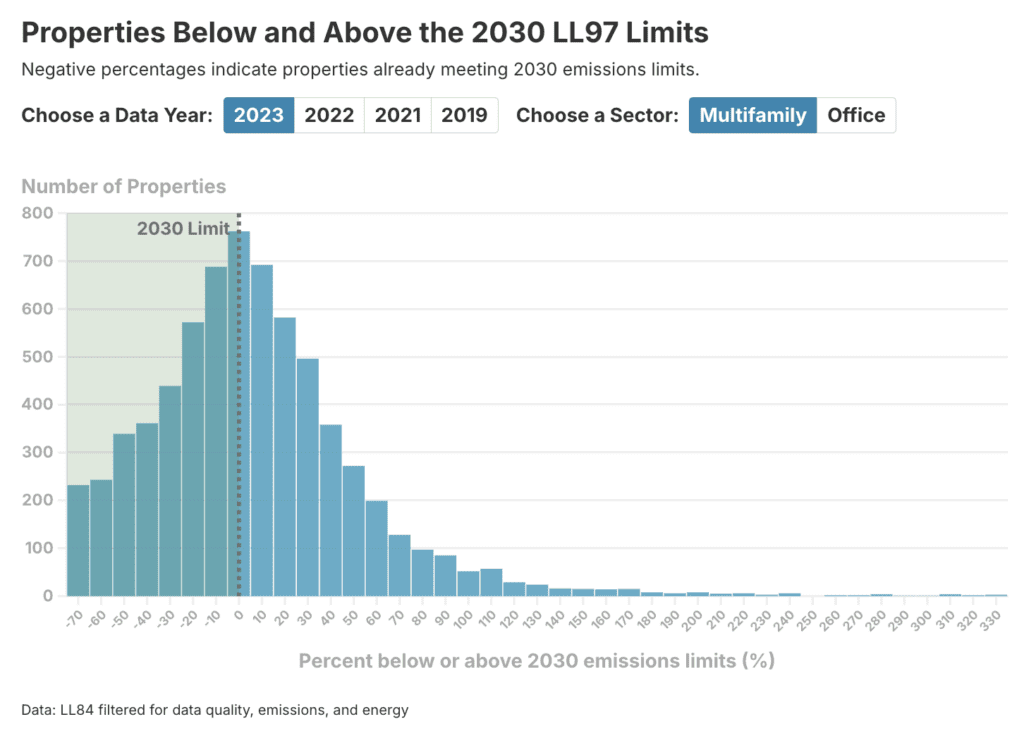
Latest updates
December 2024
- On December 20, DOB published the final version the newest package of rules for Local Law 97.
- DOB released updated compliance submission guidance for the May 1, 2025 reporting deadline.
September 2024
- On September 27, DOB released a new set of proposed rules for LL97. If adopted, this third major set of rules will create new support for affordable housing retrofits, clarify adjustments for financially constrained buildings, and fill in other provisions required by the law. On October 9, we hosted a webinar with DOB unpacking the details.
July 2024
- DOB issued the first version of the Article 320 Information Guide, which details reporting guidelines for owners of covered buildings.
June 2024
- DOB made available a template for the documentation of four Prescriptive Energy Conservation Measures (PECMs). The completed template or equivalent must be uploaded for each covered building that follows the PECM compliance pathway by May 1, 2025.
April 2024
- Urban Green published a new analysis unpacking LL97’s new game-changing electrification credit, highlighting how a little electrification today can go a long way for covered buildings.
Related press

Download the Local Law 97 summary
Get up to speed on NYC’s Building Emissions Law.
